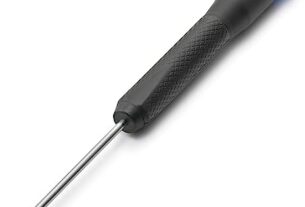Are you struggling with optimizing your website for search engines? Have you heard about tool tags, but don’t fully understand their importance? Look no further! This comprehensive guide will provide everything you need to know about tool tags and how they can improve your SEO.
What are Tool Tags?
Tool tags, also known as meta tags or HTML tags, are snippets of code that provide information about a webpage to search engines. They are invisible to users but are crucial for search engines to understand the content of a page.
There are several types of tool tags, including title tags, description tags, header tags, image alt tags, and canonical tags. Each tag serves a unique purpose in helping search engines categorize and rank webpages.
Title Tags
The title tag is one of the most critical tool tags for SEO. It appears at the top of a browser’s window and is displayed as the clickable headline in search engine results pages (SERPs). A well-crafted title tag should accurately describe the content on the page while incorporating relevant keywords.
For example, if you have a blog post about “The Best Tools for Social Media Marketing,” your title tag could be “10 Powerful Tools for Social Media Marketing | [Your Website Name].” This title includes both the focus keyword “tools for social media marketing” and your brand name.
Description Tags
While not directly affecting rankings, description tags are essential for attracting clicks from SERPs. The description tag provides a brief summary of what users can expect to find on the page. A compelling description can entice users to click through to your site.
When writing a description tag, make sure it accurately reflects the content on the page and includes relevant keywords. Aim for around 160 characters or less to ensure that it displays properly in SERPs.
Header Tags
Header tags (H1-H6) are used to structure content on a page and provide context to search engines. The H1 tag is typically used for the main title of a page, while H2-H6 tags are used for subheadings.
Using header tags correctly can improve your SEO by making it easier for search engines to understand the hierarchy of your content. Make sure to use relevant keywords in your header tags but avoid keyword stuffing.
Image Alt Tags
Alt tags are used to describe images on a webpage and assist users with visual impairments in understanding the content. They also provide another opportunity to include relevant keywords on your page.
When writing alt tags, be descriptive and use natural language. Avoid using generic terms like “image” or “picture.” Instead, describe what is happening in the image or how it relates to the content on the page.
Canonical Tags
Canonical tags are used to indicate the preferred version of a webpage when duplicate content exists. For example, if you have two versions of a page – one with HTTP and one with HTTPS – you can use a canonical tag to specify which version should be indexed by search engines.
Using canonical tags correctly can prevent duplicate content issues and ensure that all variations of your pages are properly indexed by search engines.
How Tool Tags Impact SEO
Tool tags play a vital role in SEO by providing information about your website to search engines. By optimizing your tool tags, you can improve your chances of ranking higher in SERPs.
Title tags, description tags, and header tags are particularly important because they provide direct signals about the content on your page. Including relevant keywords in these tags can help search engines understand what your page is about and rank it accordingly.
Alt tags also contribute to SEO by providing another opportunity to include keywords on your page. Additionally, including descriptive alt text can improve user experience for those with visual impairments.
Canonical tags help prevent duplicate content issues, which can negatively impact SEO. By specifying which version of a page should be indexed, canonical tags ensure that all variations of your pages are properly attributed to one URL.
Tips for Optimizing Tool Tags
Now that you understand the importance of tool tags for SEO, here are some tips for optimizing them on your website:
1. Use relevant keywords in title tags, description tags, and header tags.
2. Write compelling descriptions that accurately reflect the content on your page.
3. Use header tags to structure your content and provide context to search engines.
4. Write descriptive alt text for images that includes relevant keywords.
5. Use canonical tags to specify the preferred version of a webpage when duplicate content exists.
6. Avoid keyword stuffing or using irrelevant keywords in tool tags.
7. Keep tool tag lengths within recommended character limits (title tags around 60 characters, description tags around 160 characters).
Conclusion
Optimizing tool tags is an essential aspect of SEO that can improve your website’s visibility in SERPs. Title tags, description tags, header tags, alt tags, and canonical tags all play a crucial role in helping search engines understand the content of your pages.
By following best practices for optimizing tool tags and incorporating relevant keywords, you can improve your chances of ranking higher in search results and attracting more organic traffic to your website.
References:
https://moz.com/learn/seo/meta-description
https://www.semrush.com/blog/how-to-use-header-tags-for-seo/
https://www.searchenginejournal.com/image-alt-text-optimization/324363/#close
https://developers.google.com/search/docs/advanced/crawling/consolidate-duplicate-urls
https://support.google.com/webmasters/answer/35624?hl=en




